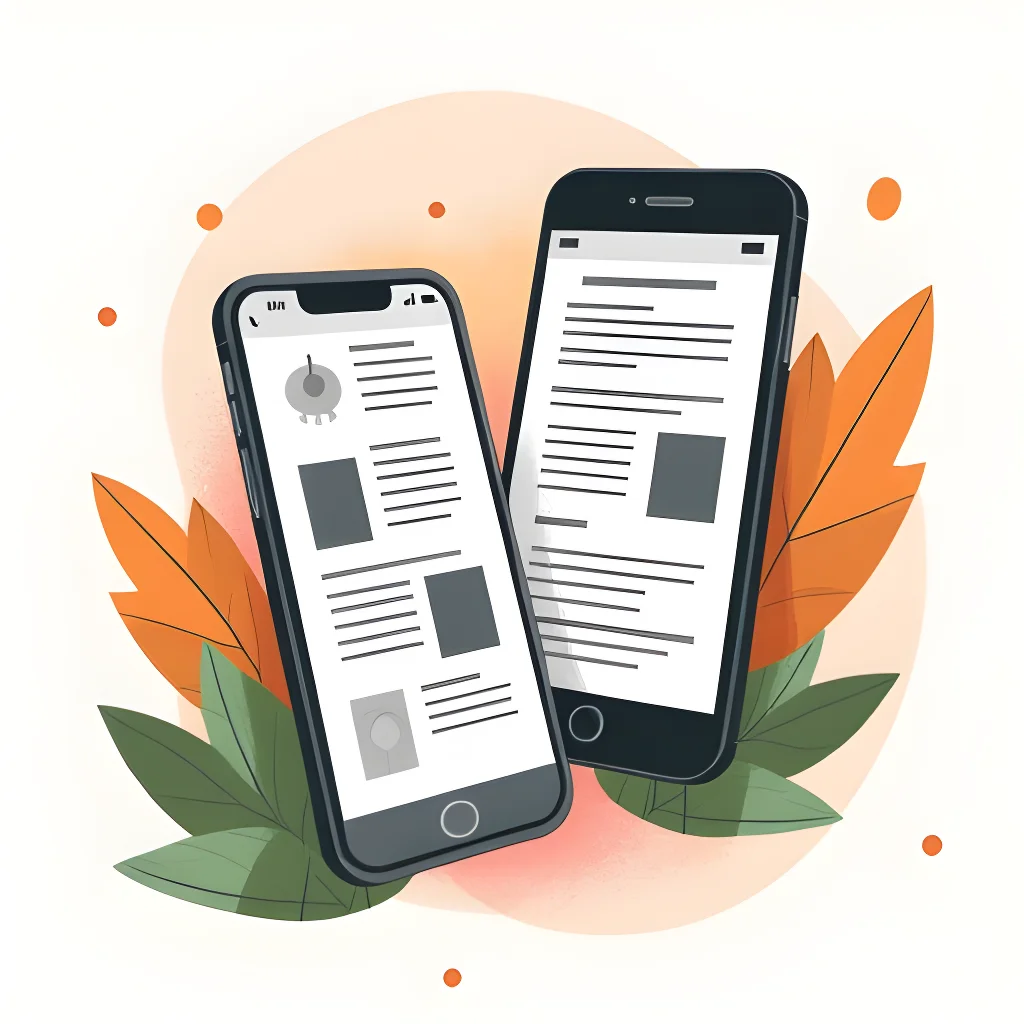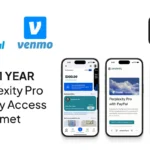Now Reading: 17 QR Code Integration Ideas for Mobile Marketing Campaigns
-
01
17 QR Code Integration Ideas for Mobile Marketing Campaigns
17 QR Code Integration Ideas for Mobile Marketing Campaigns

QR code integration ideas for mobile marketing campaigns offer businesses a powerful tool to connect with customers instantly, track engagement, and drive conversions. These small, scannable codes have revolutionized how brands interact with consumers, creating seamless pathways from print materials, product packaging, and physical locations to digital content, promotions, and interactive experiences.
As smartphone usage continues to dominate consumer behavior, implementing strategic QR code solutions in your mobile marketing strategy can significantly enhance customer engagement and provide valuable data insights for optimizing your campaigns.
Key Takeaways
QR Code Integration Ideas for Mobile Marketing Campaigns
- Place QR codes on product packaging to deliver interactive content, AR experiences, or instant access to product details and reviews.
- Add QR codes to print ads, brochures, and business cards to drive users to landing pages, videos, or digital portfolios.
- Use QR codes in retail displays for virtual try-ons, extended inventory, or exclusive in-store offers.
- Integrate QR codes into event materials for seamless registrations, digital tickets, and access to event information.
- Launch gamified campaigns, such as AR games or scavenger hunts, to boost engagement and social sharing.
- Offer instant discounts, coupons, or loyalty rewards through QR code scans.
- Enable contactless mobile payments and cashless transactions using QR codes.
- Drive app downloads by linking QR codes to app stores or exclusive in-app content.
- Collect customer feedback and reviews by directing scans to surveys or feedback forms.
- Provide virtual property tours or immersive experiences for real estate and travel marketing.
- Use QR codes in outdoor advertising and billboards to connect offline audiences with digital campaigns.
- Encourage social media engagement by linking QR codes to profiles, contests, or user-generated content campaigns.
- Deliver exclusive video content, tutorials, or behind-the-scenes footage via QR code access.
- Track campaign performance and user behavior with dynamic QR codes and analytics.
- Personalize customer journeys by using QR codes that adapt content based on location, time, or user actions.
- Promote NFTs, digital collectibles, or unique digital assets through QR code-enabled campaigns.
- Enhance customer service by linking QR codes to live chat, FAQs, or support resources.
Why QR Codes Are Essential For Mobile Marketing
QR codes (Quick Response codes) have transformed from a niche technology to an essential component of modern marketing strategies. These two-dimensional barcodes serve as bridges between the physical and digital worlds, allowing consumers to access online content with a simple smartphone scan.
QR codes offer unique advantages that make them particularly valuable for mobile marketing strategies:
- Instant connectivity: Users can access digital content immediately without typing URLs or searching for information.
- Bridging offline and online experiences: QR codes connect traditional marketing materials like print ads, packaging, and billboards to digital assets.
- Enhanced tracking capabilities: Dynamic QR codes provide real-time analytics on user engagement, location data, and scan frequency.
- Cost-effectiveness: Creating and implementing QR codes requires minimal investment compared to other marketing technologies.
- Versatility: They can link to websites, social media profiles, app downloads, contact information, payment systems, and much more.
The integration of QR codes into mobile marketing campaigns creates opportunities for interactive, measurable, and personalized customer experiences that weren’t possible with traditional marketing methods alone.
Useful Articles:
Creative QR Code Integration Ideas
Implementing QR codes in innovative ways can significantly enhance your mobile marketing campaigns. Here are some proven strategies used by successful brands that you can adapt for your business.
Product Packaging And Retail Displays
Product packaging offers prime real estate for QR code placement:
- Interactive product information: Coca-Cola used dynamic QR codes on their packaging to deliver unique experiences to customers each time they scanned the codes, providing fresh content and maintaining engagement over time.
- Authentication and warranty registration: Place QR codes that verify product authenticity and simplify the warranty registration process.
- Reordering simplicity: Add QR codes that take customers directly to reorder pages for consumable products.
- Assembly instructions and tutorials: Link to video demonstrations showing how to use or assemble products.
- Sustainability information: Share details about your product’s environmental impact and recycling instructions.
For retail displays, consider:
- Extended inventory access: QR codes on shelf displays can show additional size, color, or style options not available in-store.
- Virtual try-on experiences: Fashion and cosmetic retailers can link to AR experiences that let customers virtually try products.
- Tesco’s virtual store concept: Following Tesco’s successful implementation in South Korea, create “virtual stores” in high-traffic areas where customers can scan QR codes to shop for products that will be delivered to their homes.
Print Advertising And Marketing Materials
Transform static print materials into interactive experiences:
- Magazine and newspaper ads: L’Oreal partnered with Glamour magazine and placed QR codes in taxis, capturing customers stuck in traffic and directing them to videos about product usage and store pages, resulting in an 80% increase in app downloads.
- Business cards: Create interactive business cards with QR codes linking to your digital portfolio, video introduction, or appointment scheduling page.
- Brochures and catalogs: Add QR codes next to products to provide additional information, customer reviews, or direct purchasing options.
- Direct mail: Include QR codes on postcards or mailers that link to exclusive offers or content, making your direct mail campaigns measurable.
- Event materials: Place QR codes on event signage, programs, and name badges to share schedules, speaker information, or networking opportunities.
Location-Based And Outdoor Advertising
Leverage physical locations to drive digital engagement:
- Billboard and transit ads: McDonald’s strategically positioned large QR codes on billboards and advertisements, allowing people to scan them for instant access to personalized deals or engaging games, effectively blending technology with traditional advertising.
- In-store navigation: Help customers find products in large stores by scanning QR codes that display indoor maps.
- Restaurant menus: Follow Starbucks’ example by implementing QR codes for contactless ordering and payment systems.
- Tourist attractions: Place QR codes at points of interest that provide historical information, audio guides, or augmented reality experiences.
- Real estate signage: Add QR codes to property signs that show virtual tours, floor plans, and contact information for immediate inquiries.
Social Media And Digital Integration
Connect your online presence across platforms:
- Social media profile QR codes: Create custom QR codes for each social platform to increase followers.
- User-generated content campaigns: Encourage customers to scan QR codes and share their experiences with your products using specific hashtags, similar to Nestle’s #LoveBreakLingo campaign.
- Snapchat and Instagram filters: Follow Netflix’s collaboration with Snapchat, where they printed snap codes on coffee cups that unlocked special filters related to their Gilmore Girls promotion.
- Live event integration: Display QR codes during webinars or livestreams that provide additional resources or exclusive content.
- Cross-platform promotions: Use QR codes to connect users from one digital platform to another, maximizing your reach across channels.
Interactive Experiences And Gamification
Create engaging experiences that encourage participation:
- Scavenger hunts: Design QR code-based treasure hunts that lead customers through your store or website, offering prizes for completion.
- Augmented reality experiences: Link QR codes to AR content that brings your products to life, similar to furniture stores allowing customers to visualize products in their homes.
- Interactive games: Develop simple games accessible via QR codes that offer rewards or discounts upon completion.
- Loyalty programs: Implement QR codes for easy points accumulation and reward redemption, following McDonald’s example of offering discounts through their restaurant app.
- Exclusive content access: Provide behind-the-scenes content, early product releases, or special announcements through QR code scans.
Strategic Planning For QR Code Campaigns
Before diving into QR code implementation, developing a comprehensive strategy ensures your campaign achieves maximum impact and delivers measurable results.
Defining Campaign Objectives
Start by establishing clear goals for your QR code campaign. Common objectives include:
- Increasing website traffic or app downloads
- Boosting product sales or service sign-ups
- Enhancing customer engagement and interaction
- Building your email or SMS subscriber list
- Providing detailed product information
- Collecting customer feedback
- Driving social media follows and engagement
Your objectives will determine the type of QR code you create, the content it links to, and how you measure success. Be specific about what you want to achieve and how QR codes will help you reach those goals.
Identifying Your Target Audience
Understanding who will be scanning your QR codes is crucial for creating relevant experiences. Consider:
- Demographics (age, location, income level)
- Tech-savviness and smartphone usage patterns
- Shopping behaviors and preferences
- Pain points and needs that your QR code can address
For example, if your audience consists primarily of younger, tech-savvy consumers, you might link your QR code to an augmented reality experience or interactive content. For an older demographic, you might focus on providing straightforward information or special offers with clear instructions on how to scan the code.
Selecting The Right QR Code Types For Your Goals
Different campaign objectives require different types of QR codes:
- URL QR codes: Direct users to your website, landing pages, or specific product pages
- vCard QR codes: Share contact information that can be saved directly to phones
- Social media QR codes: Connect users to your social profiles for increased followers
- App download QR codes: Take users directly to app stores for quick downloads
- Payment QR codes: Enable contactless transactions
- Video QR codes: Link to product demonstrations, tutorials, or promotional videos
- Event QR codes: Provide event details and registration options
Dynamic QR codes are particularly valuable for marketing campaigns as they allow you to:
- Change the destination URL without replacing the printed code
- Track scan metrics and user behavior
- A/B test different landing pages
- Schedule different content to appear at specific times
By aligning your QR code type with your campaign objectives and audience needs, you create a foundation for a successful mobile marketing initiative.
Useful Articles:
Technical Implementation Best Practices
Creating effective QR codes requires attention to technical details that ensure optimal functionality and user experience.
Designing Scannable And Branded QR Codes
The visual appearance of your QR code significantly impacts scan rates and brand recognition:
- Maintain adequate error correction: QR codes have built-in error correction capabilities, but customization should not compromise scannability. Always test heavily customized codes across multiple devices.
- Add your logo strategically: Place your logo in the center of the QR code without obscuring the positioning markers in the corners.
- Use brand colors: Customize your QR code with your brand colors while maintaining sufficient contrast between the code and background.
- Size matters: Ensure your QR code is large enough to be scanned easily-generally at least 1 inch (2.5 cm) for print materials.
- Include a call to action: Add text near the QR code that tells users what they’ll get by scanning it, such as “Scan for exclusive discount” or “Scan to learn more.”
- Provide scanning instructions: For audiences less familiar with QR codes, include brief instructions on how to scan using a smartphone camera.
Mobile Optimization For Landing Pages
The destination of your QR code must be optimized for mobile users:
- Responsive design: Ensure all linked pages automatically adjust to different screen sizes.
- Fast loading times: Optimize images and minimize code to ensure pages load quickly on mobile networks.
- Simplified navigation: Design with thumb-friendly buttons and minimal typing requirements.
- Clear value proposition: Immediately show users the benefit they receive for scanning your code.
- Streamlined forms: If collecting information, keep forms short and use auto-fill where possible.
- Direct fulfillment: Allow users to complete desired actions (purchases, sign-ups, downloads) without unnecessary steps.
QR Code Tracking And Analytics
Leverage data to measure performance and optimize your campaigns:
- Implement dynamic QR codes: Unlike static codes, dynamic QR codes allow you to track scans and gather valuable user data.
- Track key metrics: Monitor scan volume, unique users, scan location, time of day, and device types.
- Conversion tracking: Measure how many QR code scans result in desired actions like purchases or sign-ups.
- A/B testing: Create multiple QR codes with different designs or destinations to determine which performs better.
- Integration with marketing platforms: Connect your QR code analytics with your broader marketing analytics for comprehensive campaign assessment.
- Regular reporting: Establish a routine for reviewing QR code performance and making data-driven adjustments.
Successful QR Code Campaign Examples
Learning from brands that have executed successful QR code campaigns can provide valuable insights for your own strategy.
Retail And Consumer Products
Major retail brands have leveraged QR codes to enhance customer experiences:
- Amazon’s Share a Smile Campaign: Amazon printed QR codes on their shipping boxes that, when scanned, led customers to an AR experience where they could draw on the box virtually and share their creations on social media.
- Nike’s Custom Shoes Campaign: Nike elevated personalization by placing QR codes on shoeboxes that directed customers to their customization platform. Customers could upload pictures with colors they liked, and Nike would generate a custom shoe design based on those colors.
- Hershey’s HerShe Campaign: Hershey’s created a powerful emotional connection by printing QR codes on chocolate bars that linked to videos featuring successful women, celebrating women’s empowerment while creating a memorable brand association.
Food And Beverage Industry
Restaurants and food brands have found innovative uses for QR codes:
- Starbucks’ Integrated Approach: Starbucks incorporated QR codes across multiple touchpoints-from print ads in People magazine to outdoor advertising in major US cities-and implemented cashless mobile payments using QR codes, creating a cohesive customer experience.
- Taco Bell and ESPN Partnership: Their joint marketing campaign for the college football Bowl Championship resulted in 225,000 QR code scans and app downloads, demonstrating the power of strategic partnerships combined with QR technology.
- McDonald’s Multi-Channel Strategy: McDonald’s placed QR codes on packaging and in commercials, allowing customers to access special offers, discounts, and information about new menu items, significantly increasing customer engagement and foot traffic.
Entertainment And Media
Entertainment companies have used QR codes to create immersive experiences:
- Netflix and Snapchat Collaboration: Netflix transformed 200 real-world cafes to look like Luke’s Diner from Gilmore Girls and partnered with Snapchat to print snap codes on coffee cups that unlocked a special Gilmore Girls filter, creating a multi-dimensional promotional experience.
- Pepsi’s Super Bowl Campaign: Pepsi broadcast an advertisement ending with a QR code that directed viewers to a special AR photo-sharing app, leveraging the massive Super Bowl audience to drive digital engagement.
- Music Festival Enhancements: Various music festivals have implemented QR codes for contactless ticketing, interactive venue maps, and exclusive artist content, improving the attendee experience while gathering valuable data.
Useful Articles:
Measuring Success And Optimization
To maximize the impact of your QR code marketing campaigns, implement robust measurement systems and continuous optimization processes.
Key Performance Indicators For QR Campaigns
Track these essential metrics to evaluate your QR code campaign performance:
- Scan volume: The total number of scans your QR code receives
- Unique scans: The number of individual users who have scanned your code
- Scan-to-conversion rate: The percentage of scans that result in desired actions (purchases, sign-ups, etc.)
- Scan location data: Geographic information about where scans are occurring
- Scan timing patterns: Time of day, day of week, and seasonal trends in scanning behavior
- Device and OS information: Data about the types of devices used to scan your codes
- Engagement metrics: Time spent on destination pages, interaction with content, and bounce rates
- Return on investment (ROI): The financial return compared to the cost of implementing the QR campaign
A/B Testing And Iteration Strategies
Continuously improve your QR code campaigns through systematic testing:
- Code design variations: Test different colors, sizes, and customization elements to identify which designs achieve higher scan rates.
- Call-to-action testing: Experiment with different instructional text accompanying your QR codes to determine which prompts generate more scans.
- Landing page optimization: Test various layouts, content formats, and offers on your destination pages to maximize conversions.
- Placement testing: Try different locations for your QR codes on packaging, advertisements, or in-store displays to find optimal positioning.
- Timing experiments: Analyze when your QR codes perform best and adjust your campaign scheduling accordingly.
- Incentive comparison: Test different rewards or benefits for scanning to identify what motivates your audience most effectively.
Long-term Strategy And Integration
Develop a sustainable approach to incorporating QR codes in your overall marketing ecosystem:
- Campaign consistency: Maintain a cohesive brand experience across all QR code touchpoints.
- Cross-channel integration: Ensure your QR code strategy complements and enhances your other marketing channels.
- Progressive enhancement: Gradually increase the sophistication of your QR campaigns as you gather more data about user preferences.
- Seasonal and event-based planning: Develop specialized QR campaigns for holidays, industry events, and other significant occasions.
- Customer journey mapping: Identify all potential touchpoints where QR codes could enhance the customer experience.
- Technology adaptation: Stay informed about advancements in QR technology and adjacent technologies that could enhance your campaigns.
Overcoming Common Challenges
Even well-designed QR code campaigns can face obstacles. Addressing these challenges proactively will help ensure your success.
Addressing User Adoption Barriers
Some consumers may be hesitant to scan QR codes due to:
- Lack of perceived value: Clearly communicate the benefit of scanning your QR code through compelling calls to action.
- Privacy concerns: Be transparent about data collection practices and provide privacy assurances near your QR codes.
- Technical unfamiliarity: Include simple scanning instructions for less tech-savvy audiences.
- Scanning friction: Ensure codes are placed in easily accessible locations where users can comfortably scan them.
- Poor previous experiences: Deliver exceptional value upon scanning to overcome negative associations with QR codes.
Technical Troubleshooting
Prevent technical issues that could derail your campaign:
- Testing across devices: Verify your QR codes work properly on various smartphone models and operating systems.
- Environmental considerations: Account for lighting conditions, scanning distances, and potential physical barriers when placing QR codes.
- Backup options: Provide alternative methods to access your content for users who encounter scanning difficulties.
- QR code maintenance: Regularly check that dynamic QR codes are functioning correctly and linked content remains relevant.
- Loading speed optimization: Ensure destination pages load quickly, especially in areas with variable network connectivity.
Future-proofing Your QR Strategy
Prepare for evolving technology and changing consumer behaviors:
- Stay informed about QR advancements: Monitor developments in QR technology and adjacent solutions like NFC tags.
- Build flexibility into campaigns: Design your strategy to accommodate emerging platforms and changing user preferences.
- Focus on value delivery: Regardless of technological changes, prioritize providing genuine value to users who engage with your codes.
- Collect and apply learnings: Use insights from each campaign to refine your approach for future initiatives.
- Explore integration with emerging technologies: Consider how QR codes might work alongside voice search, augmented reality, and other emerging technologies.
QR code integration ideas for mobile marketing campaigns offer businesses powerful tools to connect physical and digital experiences, track customer engagement, and drive conversions. By strategically implementing QR codes across product packaging, advertising materials, in-store displays, and digital channels, brands can create seamless customer journeys that enhance engagement and provide valuable data insights.
The most successful QR campaigns deliver clear value to users, maintain consistent branding, and evolve based on performance metrics. As smartphone technology continues to advance, QR codes remain a versatile, cost-effective solution for innovative mobile marketing strategies that bridge the offline-to-online gap and create memorable customer experiences.




















